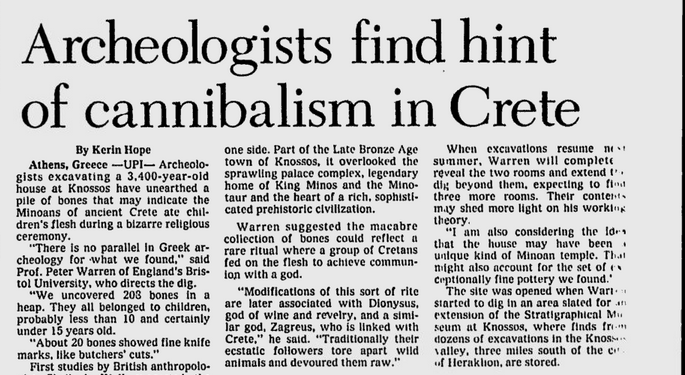
http://history.stackexchange.com/questions/7330/was-there-human-sacrifice-in-ancient-crete
This is a matter of debate, the Anemospilia findings have been controversial since the site was first excavated in 1979, and the Kydonia findings are quite recent; the sceleton was discovered in 2010. Insofar there has been no conclusive study of the Kydonia findings, the excavations are on going and Maria Andreadaki-Vlazaki, the archaeologist responsible and General Director of Antiquities, has mentioned that it’s still too early to tell.
Peter Warren first suggested human sacrifice as a possible interpretation for the skull fragments that he discovered in 1967 in the Early Minoan settlement in Fournou Korifi:
The discovery of the bones of four children in a Late Minoan house near the palace centre of Knossos reinforced Warren’s belief that the Minoans practiced human sacrifice. Both Warren and Nikolaos Platon supported the human sacrifice interpretation, while other scholars argued that the finds suggested a secondary burial. The more sensational interpretations included cannibalism:

